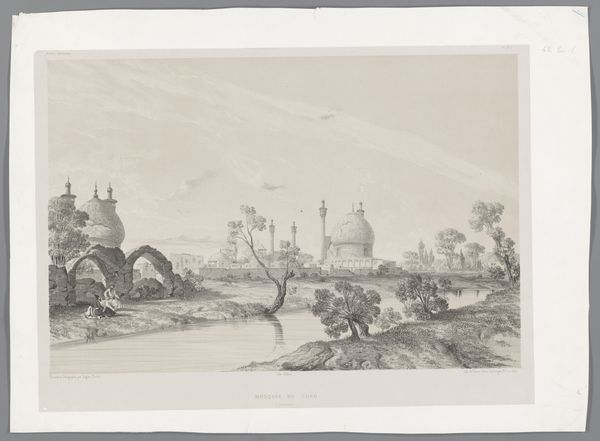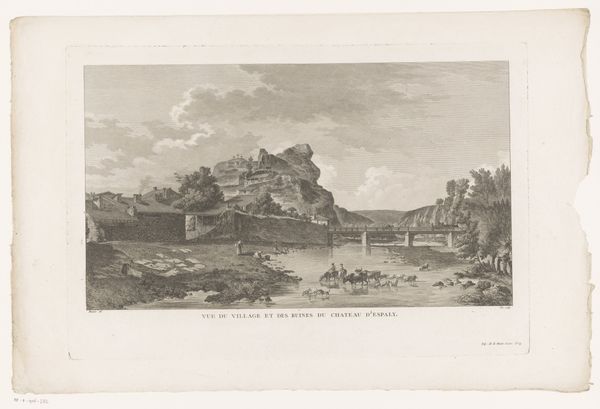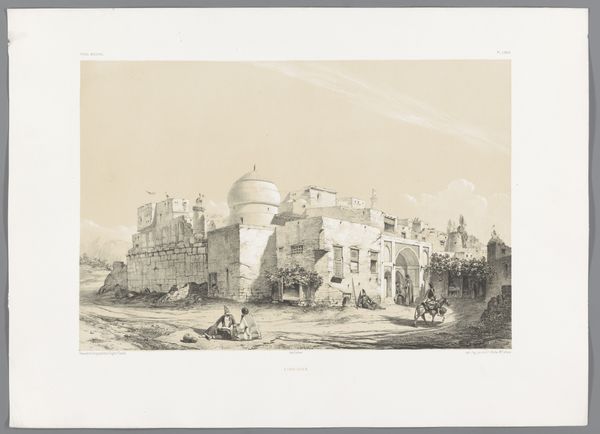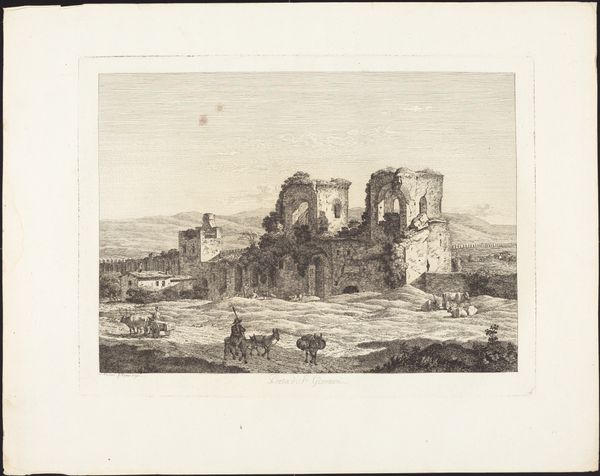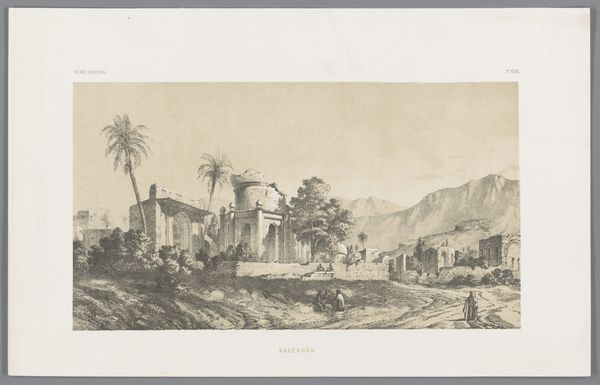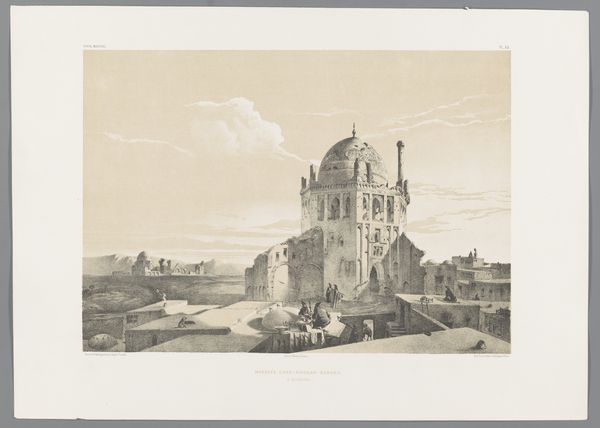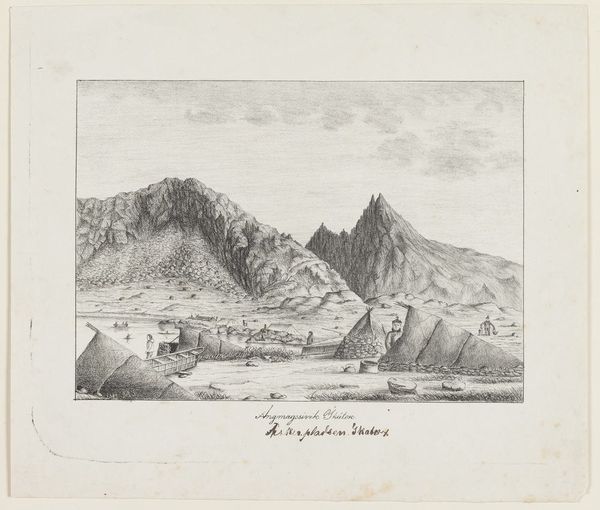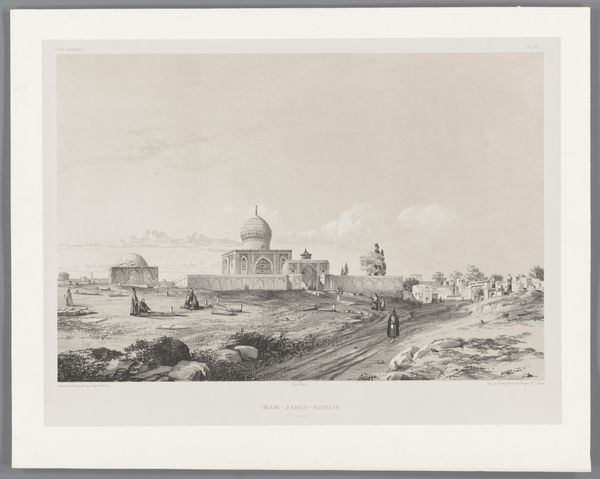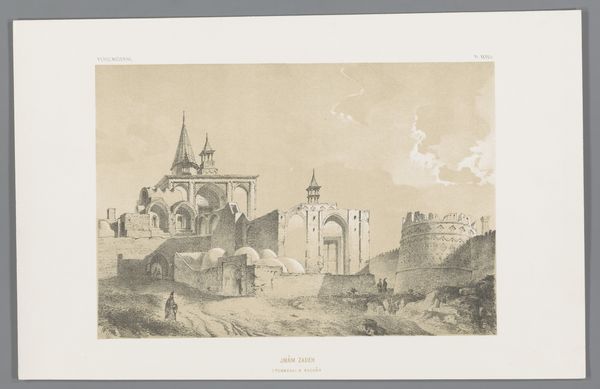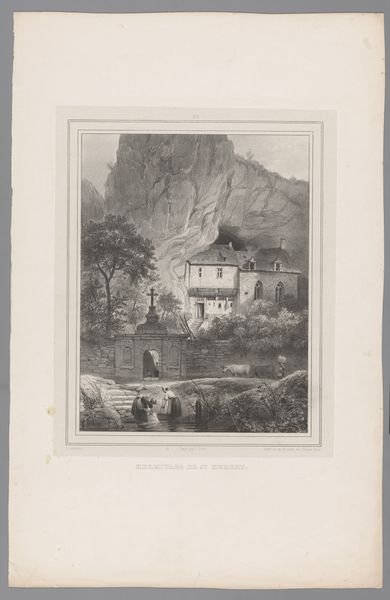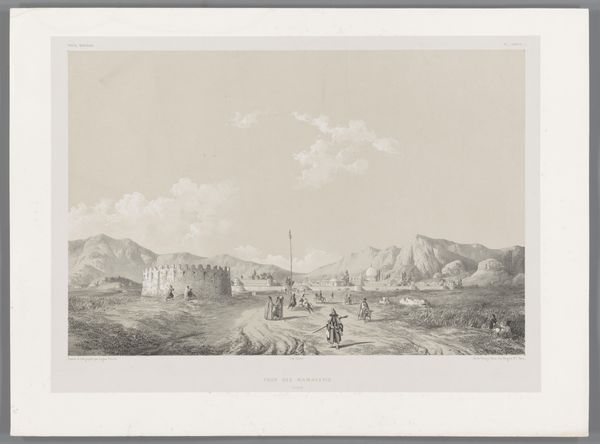
drawing, lithograph, print
#
drawing
#
lithograph
# print
#
landscape
#
romanticism
#
orientalism
#
islamic-art
Dimensions: height 262 mm, width 392 mm
Copyright: Rijks Museum: Open Domain
Editor: Here we have Eugène Flandin's "Gezicht op Imamzadeh Komijan in Irak-i Ajam," a lithograph from the mid-19th century. There’s something quite serene about the composition, yet I’m also struck by a sense of distance. How do you interpret this work? Curator: This lithograph invites us to consider the historical context of European Orientalism and its impact on the representation of Islamic architecture. Flandin's gaze isn't just a neutral observation; it is deeply entwined with colonial power dynamics. What aspects of the composition strike you as reinforcing this idea of "distance" you mentioned? Is it just visual? Editor: The muted tones contribute to that sense of remove, I think, but it is also in how he represents the figures in the work. Curator: Exactly! Note how the figures seem to be going about their daily lives but appear small and somewhat anonymous within the vast landscape and architecture. This could be read as a subtle assertion of European dominance, reducing local populations to mere elements within the exoticized landscape, don’t you think? Do you feel that romanticizing such architectural landmarks inadvertently overlooks the complex political and social issues? Editor: I see what you mean. By focusing on the aesthetic appeal, perhaps it silences other stories, other perspectives of those who actually inhabited this space? Curator: Precisely! Considering art within these frameworks pushes us to examine whose voices are amplified and whose are marginalized. Editor: It’s been helpful to explore how art is more than just pretty pictures and how colonial powers can affect cultural perceptions, even unintentionally. Curator: Yes, viewing art through an activist lens is important, enabling it to become a critical tool for revealing histories.
Comments
No comments
Be the first to comment and join the conversation on the ultimate creative platform.
